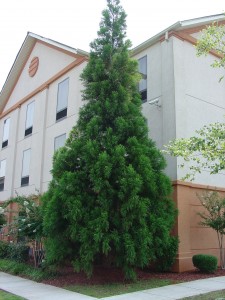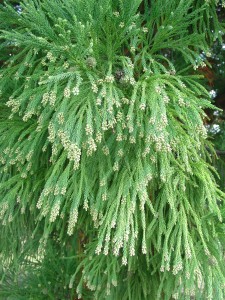Cryptomeria, aka Japanese cedar, (Cryptomeria japonica) is an evergreen conifer native to China and Japan. It rated to be very long-lived (USDA hardiness zones 6 to 10). Some cultivars may be hardy in 5-b as well.
There are many forms of cryptomerias, ranging from dwarf globe-shaped shrubs to narrow pyramidal trees. Needle foliage may be green or golden sometimes contorted. Heights vary from 6 to 80 feet in height and 3 to 20 feet in width. All thrive in open full sun and good air circulation; they prefer an average moist well-drained acidic to neutral pH soil.
Pyramidal forms develop into beautiful evergreen privacy screens or hedges. Two to three year old established cryptomerias are superior to Leyland Cypress (x Cupressocyparis leylandii) in blizzard-proned and high wind areas. Young plants should be trained to a single leader. Cryptomerias suffer from few disease and pest problems. Prune off any discolored foliage as fungal blights cause inner foliage browning.
Five most popular pyramidal forms:
‘Yoshino’ is far and away the most popular cultivar, with a rapid growth rate (40 to 50 feet tall, 1/2 that in width) and bright green summer foliage; in zone 7 and areas north, typically foliage takes on a bronze winter tinge.
‘Ben Franklin’ grows slightly slower, more compact and darker green foliage than Yoshino. Similar height and width as Yoshino.
‘Radicans’ exhibits an upright, pyramidal form to 20 to 30 feet tall and 7 to 10 ft. wide in 12-15 years; popular choice in zone 7 gardens for its dark green non-bronzing foliage.
‘Black Dragon’ is 10 by 10 feet slow grower with dark green foliage.
‘Gyokuryu’ is “the Yoshino for small gardens” with a dense pyramidal form and dark green non-bronzing foliage; grows 5 to 6 feet in 10 years (10 to 15 feet in maybe 20 years).



 Posted in
Posted in 
